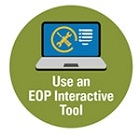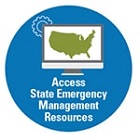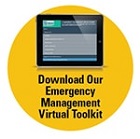|

Integrating Fentanyl and Opioid Overdoses in K-12 and Higher Ed Emergency Management Planning
As the threat from fentanyl and opioid misuse continues to evolve, it is critical
for education agencies to consider the risk posed by fentanyl
and opioid overdoses to K-12 schools, school districts, institutions
of higher education (IHEs), and their surrounding communities. Fentanyl
and opioid overdoses pose a serious threat to school and campus
communities.
According to the Centers for Disease Control and Prevention (CDC), since 2013,
overdose deaths related to synthetic opioids, including fentanyl, have noticeably increased in the United States. The CDC found that among Americans aged 10-19,
overdose deaths increased between 2019 and 2021,
with those involving illicitly manufactured fentanyl increasing by 182 percent. School and campus communities may
have students and staff who are directly affected by fentanyl and opiod overdoses, or students and staff may be impacted indirectly through parents, guardians, family members, or roommates. The opioid crisis is also evolving. The United States recently designated fentanyl combined with xylazine (a non-opioid tranquilizer approved by the U.S. Food and Drug Administration for veterinary use)
as an emerging threat.
Core planning teams can address fentanyl and opioid overdoses in their emergency
operations plans (EOPs). Following the six-step planning process
outlined in the Guide for Developing High-Quality School Emergency Operations Plans, the
Guide for Developing High-Quality Emergency Operations Plans for Institutions of Higher Education, and
The Role of Districts in Developing High-Quality School Emergency Operations Plans: A Companion to the School Guide, planning teams can develop a Drug Overdose Annex and related functional annexes, such as a Public Health, Medical, and Mental Health Annex. When developing or updating the EOP, planning teams can look at the threat from fentanyl and opioid-related overdoses from the angle of before, during, and after an incident, as well as within the framework of prevention, protection, mitigation, response, and recovery. It is also important for planning teams to conduct this work in collaboration with community partners, such as local law enforcement, local public health authorities, county district attorney offices, local representatives of the U.S. Drug Enforcement Administration (DEA), and community or youth organizations that address substance misuse prevention.
To support core planning teams in integrating this threat in their
emergency planning efforts, the REMS TA Center is pleased to
share a NEW fact sheet on
fentanyl and opioids for K-12 schools, school districts, and IHEs. This
fact sheet provides education agencies with information and
strategies for addressing fentanyl and opioid overdoses on their campuses
through EOPs and other preparedness activities, such as having
naloxone on hand for emergency treatment, awareness, and training.
If you have created or use tools and resources to
support fentanyl and opioid overdose prevention, please
submit them for inclusion in our REMS TA Center Tool Box. To
learn more about this critical topic and to find resources you
can share with your school or campus community, we encourage
you to explore the resources listed below.
Related Resources
You can find resources and more information on this topic from the REMS TA Center and our partners below.
REMS TA Center Resources
- Fentanyl and Opioids: Preventing Overdoses and Related Emergencies at K-12 and Higher Education Campuses, Fact sheet
- Opioids, Drug-Related Emergencies, and Substance Abuse Prevention Before, During, and After the COVID-19 Pandemic, Podcast
- Opioids, Drug-Related Emergencies, and Substance Abuse Prevention Before, During, and After the COVID-19 Pandemic, Webinar
- Opioid Overdoses and Drug-Related Emergencies, Web page
Partner Resources
- Lessons From the Field Webinar - Part 1: Knowing the Facts About Fentanyl, Webinar (U.S. Department of Education [ED] and National Center on Safe Supportive Learning Environments [NCSSLE])
- Lessons From the Field Webinar - Part 2: Preventing and Addressing Fentanyl Use, Webinar (ED and NCSSLE)
- Preventing and Reducing Youth and Young Adult Substance Misuse: Schools, Students, Families, Website (ED)
- Operation Prevention, Website (U.S. Department of Justice [DOJ], DEA and Discovery Education)
- Campus Drug Prevention, Website (DOJ, DEA)
- Get Smart About Drugs: A DEA Resource for Parents, Educators & Caregivers, Website (DOJ, DEA)
- Stop Overdose, Website (U.S. Department of Health and Human Services [HHS], CDC)
- Fentanyl Facts, Web page (HHS, CDC)
|










